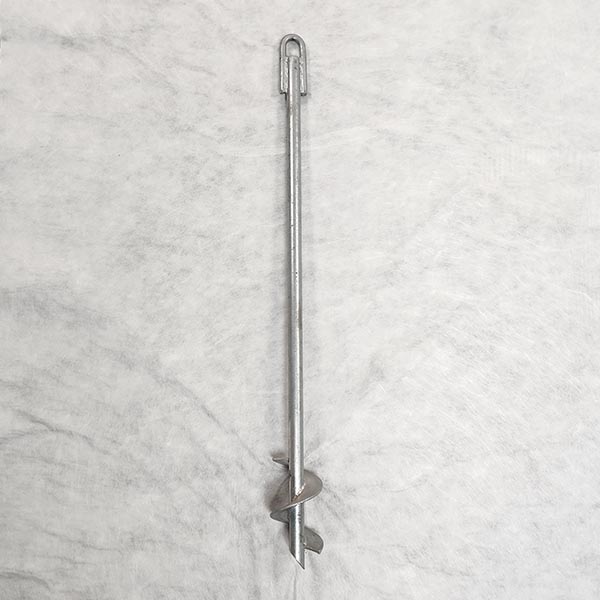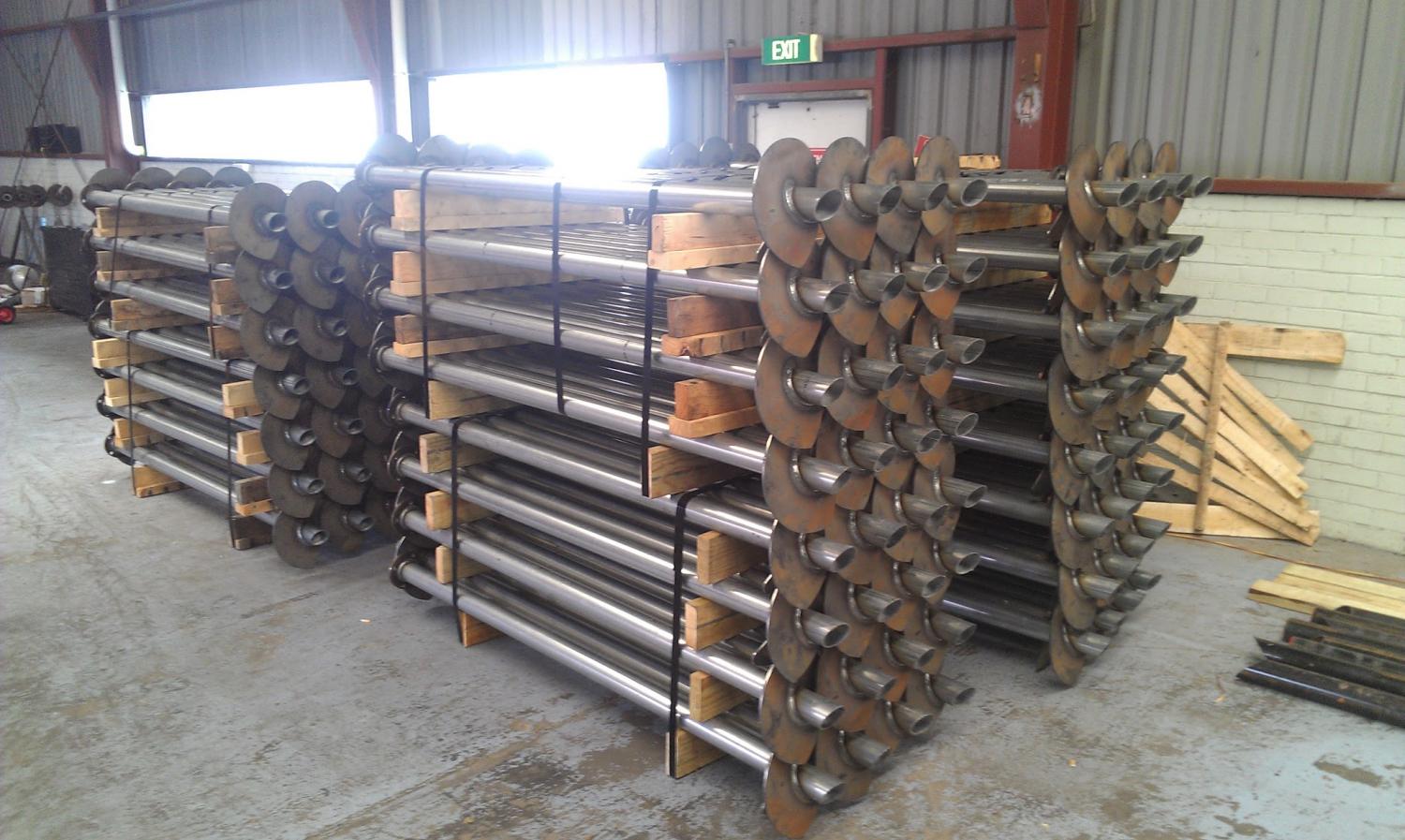Exactly How Sturdy Earth Anchors Job: A Comprehensive Overview to Dirt Anchoring Solutions
Heavy-duty Earth anchors play an important function in giving stability and support in different construction applications. By embedding deeply into the ground, they withstand vertical and side forces efficiently. Various sorts of anchors accommodate different dirt conditions, making them versatile. Understanding their auto mechanics and setup methods is vital for making the most of performance. What elements influence their performance, and how do they compare to conventional methods? The answers may surprise you.
Recognizing Durable Earth Anchors
Sturdy Earth anchors act as vital components in various construction and landscape design projects, giving security and support in tough dirt conditions. These supports work by being embedded into the ground, where they withstand lateral and upright pressures. Their design enables safe attachment to frameworks, ensuring they continue to be anchored versus soil motion or outside loads.The effectiveness of durable Earth supports mainly depends upon the sort of soil and the anchor's installation deepness. Correct installation strategies are critical, as they establish the anchor's holding capability. Ecological aspects, such as dampness and freeze-thaw cycles, can also affect performance.These anchors are often made use of in applications ranging from protecting fences and keeping wall surfaces to maintaining short-term frameworks throughout unfavorable weather conditions. Recognizing the concepts behind sturdy Earth anchors is crucial for professionals seeking to improve the longevity and safety and security of their projects.
Kinds Of Heavy-Duty Earth Anchors
Numerous kinds of heavy-duty Earth anchors are developed to satisfy details demands based on soil conditions and job demands. Helical anchors, including screw-like blades, work in softer dirts, offering high load capacities and easy setup. Driven anchors, which are inculcated the ground, are appropriate for rocky surfaces and give prompt lots assistance. Tie-back supports are commonly made use of in preserving wall surface applications, allowing for side assistance by securing into the ground at an angle. An additional type is the cast-in-place anchor, ideal for concrete applications, as they are integrated right into structures for improved stability. Dirt screw supports are flexible alternatives that can be made use of in various soil types, offering trustworthy tension and compression capacities. Each type offers unique applications, guaranteeing security and security in construction and landscape design jobs. Understanding these choices permits educated decisions in picking the ideal Earth anchoring remedy.
The Mechanics of Soil Anchoring

Recognizing the auto mechanics of dirt anchoring needs an assessment of different sorts of Earth anchors and their setup strategies. Each support kind provides one-of-a-kind qualities that influence its efficiency in various soil problems. Proper installment approaches are crucial for making the most of the securing system's security and performance.
Sorts Of Earth Anchors
Earth anchors, essential elements in dirt anchoring systems, can be found in a number of types, each created for details applications and dirt conditions. The most typical kinds consist of screw supports, which are twisted into the ground, giving strong side resistance. Helical anchors feature blades that permit for efficient setup in various dirt types, making them ideal for both short-term and long-term applications. Driven supports, usually made from steel, are inculcated the dirt and work in rough or dense settings. Auger anchors utilize a helical design to help with setup in softer soils. Lastly, plate anchors contain a flat plate buried horizontally, dispersing load over a larger location, perfect for applications calling for high lots capacities in natural dirts.
Setup Techniques Explained
Proper installation techniques are essential for the performance of soil anchoring systems. The procedure commonly starts with site assessment, confirming the picked place can support the support's lots. After figuring out the appropriate support type, proper opening depth and angle should be established. The installment includes driving the support right into the ground utilizing specialized tools, such as manual or hydraulic motorists, to attain best embedment. Post-installation, tensioning the anchor is vital to assure security; this is often verified with lots testing. Furthermore, bordering dirt problems ought to be monitored to stop displacement. Adhering to these strategies not only boosts the anchor's performance yet additionally lengthens its lifespan, supplying trustworthy support for various applications.
Applications of Heavy-Duty Earth Anchors
While sturdy Earth anchors are commonly related to construction and landscape design, their versatility reaches a selection of applications official site across various sectors. In civil design, they supply crucial assistance for maintaining walls, making sure stability in areas vulnerable to soil disintegration. The marine field utilizes these supports for protecting docks and marinas, protecting against activity brought on by currents and trends. Additionally, in the telecommunications industry, durable Earth anchors are substantial for stabilizing cell towers and various other high structures against wind forces. Agricultural applications additionally benefit, as these anchors can secure structures like greenhouses and animals fencing, ensuring they stand up to extreme weather. In sustainable energy projects, such as wind farms, Earth supports play an essential duty in safeguarding generator structures, improving general security and performance. This wide variety of applications highlights the versatility and dependability of heavy-duty Earth supports across various areas.
Benefits Over Conventional Anchoring Methods
Traditional anchoring techniques have long been counted upon for stability, heavy-duty Earth anchors supply considerable benefits that boost performance and performance. One major benefit is their remarkable load-bearing capacity, which enables them to endure greater pressures without failure. This stamina makes them perfect for requiring applications, such as in building and construction and utility installations.Additionally, durable Earth supports are developed for much deeper installation, offering better stability in numerous soil conditions, consisting of sandy or loosened soils. Their resistance to deterioration and ecological elements ensures a much longer life-span and reduced upkeep prices contrasted to standard methods.Moreover, these anchors can be mounted with marginal disruption to the surrounding location, protecting this hyperlink the stability of the landscape. On the whole, heavy-duty Earth anchors offer a reliable and trusted solution for securing demands, going beyond the constraints typically linked with typical anchoring techniques.
Setup Process and Ideal Practices
The installment procedure for dirt anchoring services begins with complete prep work and site assessment to guarantee peak efficiency. Following this, a step-by-step installation guide offers clear instructions for reliable execution (heavy-duty earth anchors). Adhering to these best practices is vital for accomplishing resilient and trustworthy anchoring results
Preparation and Website Analysis
Efficient preparation and thorough website examination are crucial actions in the setup of soil anchoring options. Prior to installment, the dirt type must be assessed to identify its bearing capacity and viability for anchoring. Carrying out a geotechnical survey can provide vital information concerning dirt structure, moisture levels, and potential ground activity. Additionally, determining existing structures, vegetation, and energies is vital to prevent interference during installation. The area must be cleared of debris and challenges to assure safe access for tools. Weather should additionally be kept an eye on, as negative conditions can influence both security and installment efficacy. By thoroughly preparing the website and evaluating all relevant aspects, the chance of effective anchor efficiency is significantly enhanced.
Step-by-Step Installment Guide
A complete installation process is important for attaining excellent efficiency of soil securing options. The setup starts with picking the suitable support type and assuring the site is free from debris. Next, appropriate opening placement is determined based upon load requirements. As soon as the place is established, openings are drilled to the defined depth and diameter making use of the appropriate devices. The support is after that inserted right into the hole, making certain it is straightened appropriately. After protecting the support, dirt is backfilled and compacted to boost security. It is important to adhere to producer guidelines throughout the process. A post-installation inspection validates that the supports are adequately positioned and operating as planned, giving reputable support for the intended application.

Upkeep and Inspection of Earth Anchors
Normal maintenance and examination of Earth anchors are necessary for making sure long-term efficiency and stability. Routine checks permit for the early detection of problems such as deterioration, loosening up, or dirt activity. Assessors need to try to find indications of rust or deterioration on the anchor elements, particularly at the link factors. Additionally, the bordering dirt must be analyzed for disintegration or adjustments in moisture content, which can influence anchor effectiveness.It is advisable to establish a regular examination schedule, preferably a minimum of annually, depending on ecological problems. Throughout evaluations, all noticeable components need to be cleansed to remove dust or debris that might conceal prospective problems. Any indicators of distress, such as turning frameworks or unusual settling, should motivate immediate assessment. Proper documents of inspections can aid in tracking anchor efficiency with time and facilitate prompt upkeep activities, making sure the supports remain useful and reputable.
Often Asked Inquiries
What Materials Are Heavy-Duty Earth Anchors Typically Made From?
Heavy-duty Earth supports are commonly created from sturdy materials such as galvanized steel or stainless-steel, guaranteeing toughness and resistance to rust. These products offer lasting support and stability in numerous soil conditions and applications.
Just How Do Soil Conditions Affect Support Efficiency?
Dirt conditions greatly affect support performance. Variables such as soil kind, wetness material, and compaction impact the support's grip and stability, with natural soils frequently giving better resistance than loosened or sandy soils, affecting general performance.
Can Heavy-Duty Earth Anchors Be Recycled After Removal?
Sturdy Earth anchors can be recycled after removal, given they are evaluated for damages and wear. Proper cleansing and upkeep improve their durability, ensuring effective performance why not try here in succeeding installments when conditions enable safe reinstallation.
What Are the Environmental Influences of Utilizing Earth Anchors?
The ecological effects of making use of Earth anchors include possible soil disturbance, disruption of regional ecological communities, and feasible contamination of groundwater. However, if made use of sensibly, their advantages often exceed these worries, promoting security in various applications.
How Do I Choose the Right Support for My Project?

Comments on “Troubleshooting Guide: Manta Ray anchors Fail to Hold”